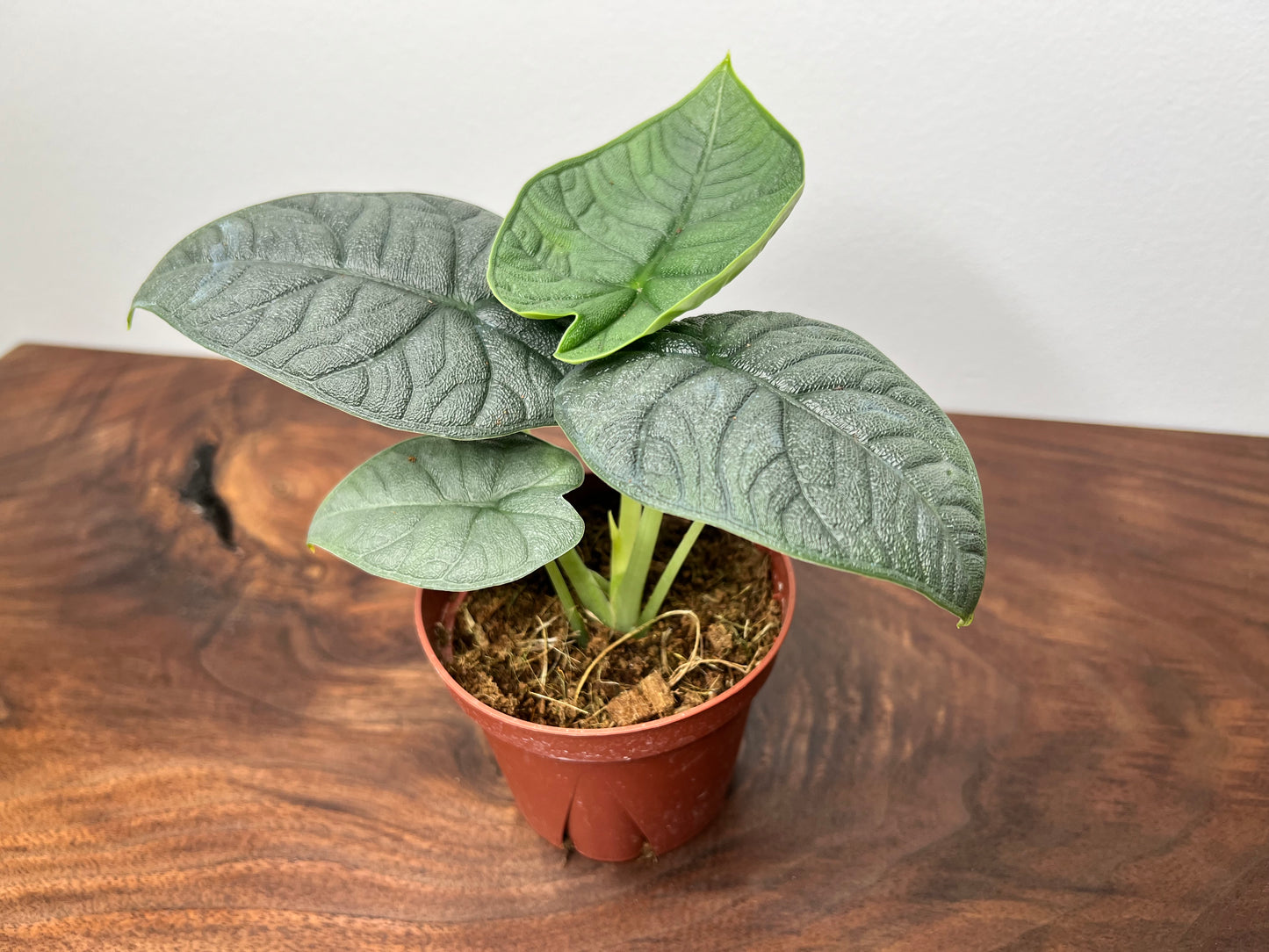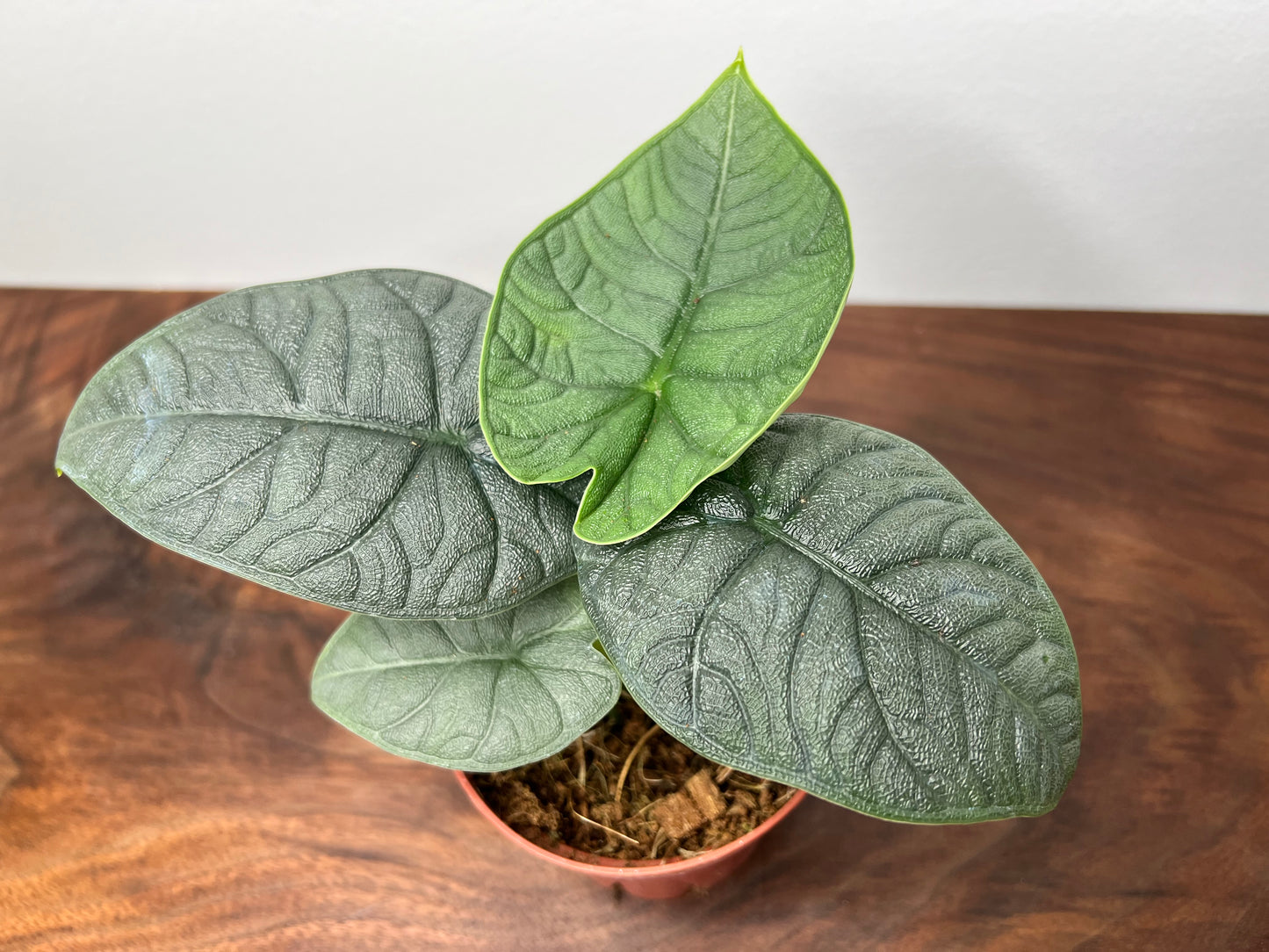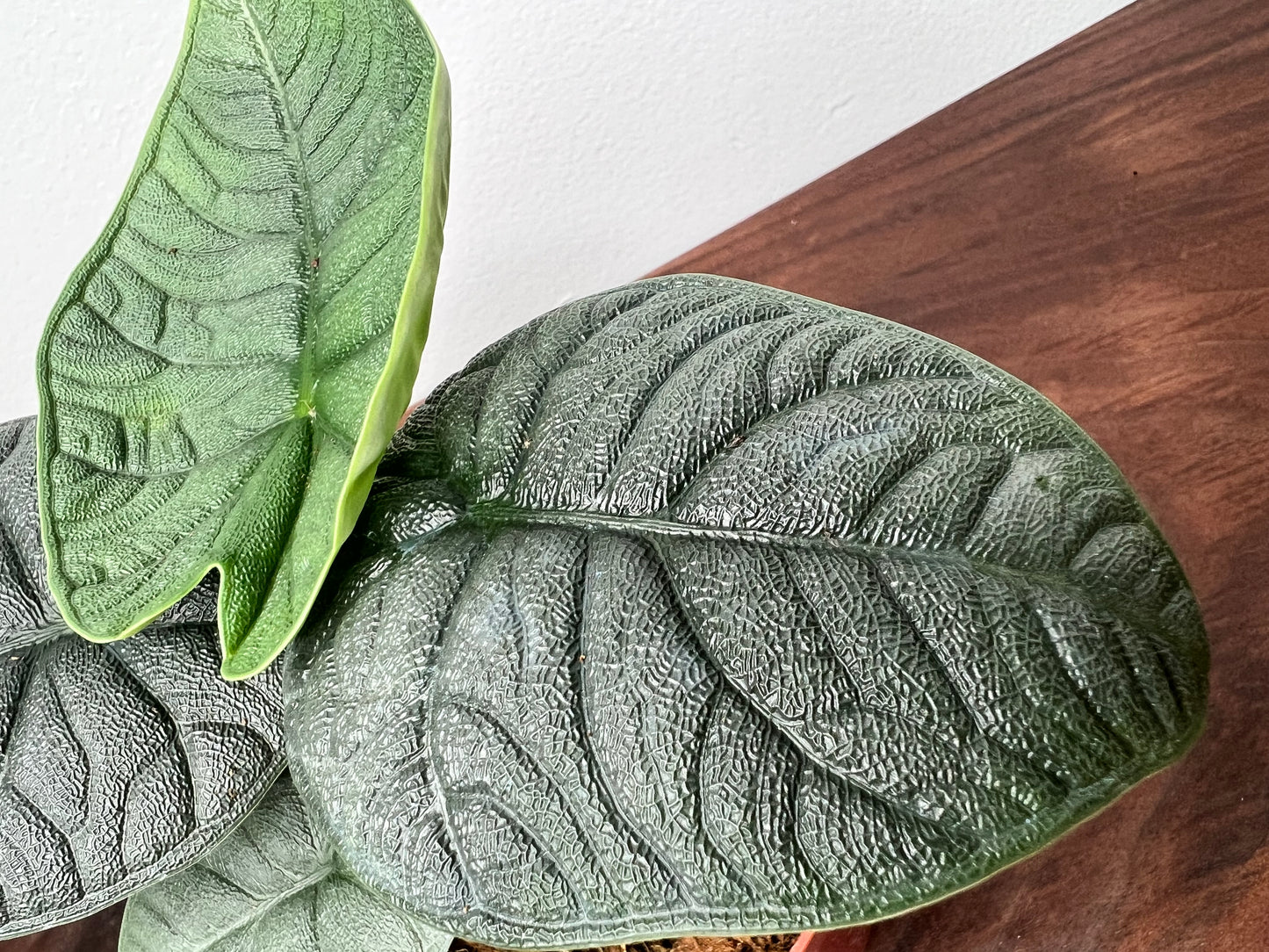The Rooted Plant Shop
Alocasia Melo
Alocasia Melo
Couldn't load pickup availability
Alocasia melo, also known as African Mask Plant or Furry Shield, is a striking species of Alocasia with distinctive, textured leaves that resemble animal hides, often appearing dark green with prominent, raised veins. The plant is relatively easy to care for if you provide the right conditions. Here's how to keep your Alocasia melo healthy and thriving:
Light Requirements
- Bright, Indirect Light: Alocasia melo prefers bright, indirect light but can tolerate some light direct sunlight in the morning or late afternoon. Too much direct sun can scorch the leaves, while too little light can cause it to become leggy and lose its beautiful foliage.
- Avoid Low Light: If the plant gets insufficient light, it will show signs of stress, such as yellowing leaves or slow growth.
Watering
- Consistent Moisture: Alocasia melo likes its soil to stay consistently moist but not waterlogged. Water when the top 1–2 inches of soil feel dry. Ensure that the pot has good drainage to prevent water from sitting at the bottom, which can lead to root rot.
- Humidity: This plant thrives in high humidity, ideally 60% or higher. If the air is too dry, the plant's leaves may curl or turn brown around the edges. You can increase humidity by misting the plant, placing it on a humidity tray, or using a humidifier.
Temperature
- Warm Temperatures: Alocasia melo thrives in warm environments, ideally between 65-80°F (18-27°C). Avoid temperatures below 50°F (10°C) as this can cause damage. Keep it away from cold drafts or direct air conditioning/heating vents.
Soil
- Well-Draining, Rich Soil: Use a light, well-draining potting mix. A mix designed for aroids or a combination of regular potting soil, perlite, and orchid bark is ideal for maintaining good drainage. Alocasia melo does not like "wet feet," so the soil should never be soggy.
Fertilizing
- Balanced Fertilizer: During the growing season (spring and summer), feed your Alocasia melo with a balanced liquid fertilizer at half strength every 4–6 weeks. In the fall and winter, when growth slows down, reduce or stop fertilizing entirely.
- Avoid Over-Fertilizing: Over-fertilizing can damage the roots and cause fertilizer burn. It's always safer to under-fertilize than over-fertilize with this plant.
Repotting
- Repotting Frequency: Alocasia melo doesn't need frequent repotting. You can repot every 1-2 years or when it outgrows its container. Choose a pot that's 1-2 inches larger in diameter than the current one.
- Check for Root Rot: If the plant is showing signs of poor growth or yellowing leaves, it could be due to root rot. When repotting, check the roots for any soft, mushy areas and trim them off before placing the plant in fresh, well-draining soil.
Pruning
- Remove Dead or Yellowing Leaves: Regularly trim off any dead, yellowing, or damaged leaves to help maintain the plant's appearance and prevent disease.
Pests
- Common Pests: Like most houseplants, Alocasia melo can be susceptible to pests such as spider mites, aphids, mealybugs, and scale. Check the undersides of the leaves regularly and treat infestations with neem oil or insecticidal soap if needed.
- Keep Leaves Clean: Occasionally wipe the leaves with a damp cloth to remove dust and prevent pest buildup.
Dormancy Period
- Alocasia melo may go dormant in the cooler months or when conditions are not ideal. During this time, the plant may lose some leaves, but it will usually bounce back when warmer weather and better conditions return. During dormancy, reduce watering and stop fertilizing.
Propagation
- Division: The most common way to propagate Alocasia melo is through division. When repotting, carefully divide the plant by separating the rhizomes, ensuring each section has a healthy root system and at least one growth point. You can then pot the divisions individually.
- Stem Cuttings: Though less common, some people also propagate through stem cuttings, but this can be trickier and is not as reliable as division.
Share



Let customers speak for us
from 373 reviewsThe way they wrap the plant in the insulation, it creates a tube of warmth for the plant with the heat pack at the bottom.

This is so fun! I received choices on how I would get my plants! 🌱 The one that was sent was perfect along with a cactus and another cute succulent! She has helped me with so many plant issues! Thanks Mel for being an amazing small business!

Everything came beautifully packaged and in such good shape. Thank you!!

I love the way Rooted plant shop wrapped up the plants n tight so they can get here in one piece. Mel also likes to educate us on plants. She makes it really easy helps us of how to take care of the plants. Thank u very much Mel for everything u do for us bottom from my heart. I appreciate u

Shipping was so fast. The plant was so safe and secure when it arrived. Mel is so great, and so knowledge. Never had a disappointing purchase.

The rooted plant shop is impeccable. I am and will continue to be a returning customer. Seller/owner very professional and very knowledgeable in her field of plants. Packaging is packed with great care.. fast shipping as well.. and the plants are as described, healthy and gorgeous!

I bought a Dieffenbachia from Mel she’s beautiful. The third leaf is just now coming out. I can’t be more happier with her.
The Spanish moss from The Rooted Plant Shop are ABSOLUTELY STUNNING!!! Incredibly healthy and full!! So happy and can’t wait for more to be stocked!!












